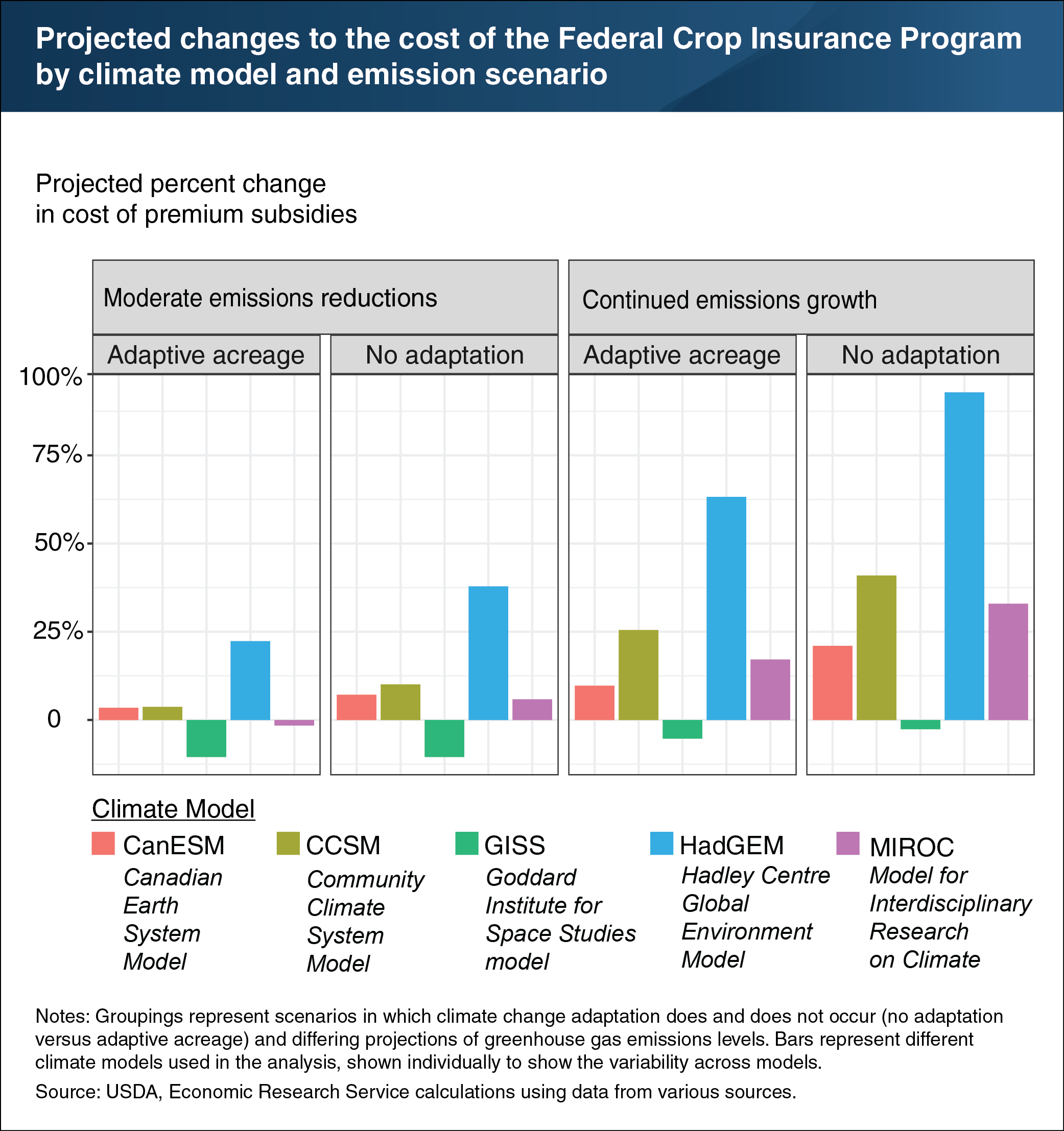Crop Insurance Costs Increase Without Climate Change Adaptation
(WASHINGTON, DC) Recent research from USDA’s Economic Research Service (ERS) explored how climate change could affect the cost of the Federal Crop Insurance Program (FCIP). Researchers trained statistical models to predict crop yields from historical weather data and used weather simulations from climate models to build scenarios showing how yields might respond to climate change. Economic models then simulated how farmers and markets might respond to changes in weather and yields. The study explored potential impacts in the year 2080, and compared climate scenarios arising from different projections of greenhouse gas emissions levels to a hypothetical future with a climate similar to that of the past several decades. Under the scenario with moderate emissions reductions, in which farmers adapt to changes in climate with adjustments to what they plant, where they plant it, and how they manage it, the cost of today’s FCIP would be on average about 3.5 percent higher than under a future with a climate similar to that of the recent past. Under the scenario in which emissions trends continue, the cost of crop insurance would increase by an average of 22 percent. The estimated increases in the cost of the insurance program are an average across the climate models shown in the chart—some models are more optimistic, while others are more pessimistic. Either way, researchers found that cost estimates are higher in scenarios with no adaptation.















































